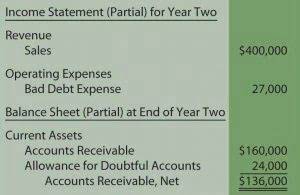Law Firm Chart of Accounts Explained: Tips & Samples

Once you have chosen a template, you must customize it to fit your law firm’s needs. Start by reviewing the accounts listed in the template and adding or deleting accounts as necessary. For example, you may need to add accounts for expenses related to legal research, continuing education, or office supplies. Conversely, cash basis accounting recognizes revenue when you’re paid (i.e., when the cash is received) and expenses when they’re paid. The tax implications of this method also allow your firm to pay tax on income once it’s received and in the bank.
Client Costs and Expenses
A law firm chart of accounts serves as a comprehensive list of all of a legal practice’s financial accounts. It also provides a framework for recording every financial transaction at the firm. When it comes to law firm finances, knowledge is more than just power—it’s key for succeeding long term and staying compliant with ethics rules. One crucial source of financial knowledge for any firm is its law firm chart of accounts. Mars showed “other people in finance the value that could be found in vet medicine,” said one vet who worked at VCA and then for a private equity backed pet clinic.
The difference between law firm bookkeeping and accounting
- Whether you’re good with numbers and spreadsheets or not, every lawyer needs to understand the basic role that bookkeeping plays in their business.
- However, if a firm fails to separate revenue that covers incurred costs from actual revenue, their records will be off.
- Additionally, keep your financial records in check by syncing to a system for accounting for law firms like QuickBooks Online.
- The act of “bookkeeping” produces financial statements, which your CPA then uses to file your taxes.
- This structure enables easy identification and aggregation of data, providing a comprehensive overview of the firm’s financial health.
By implementing a well-structured chart of accounts, you can ensure that your law firm’s financial records are accurate, up-to-date, and easily accessible. Using law firm management software with robust accounting capabilities can also automate the double-entry bookkeeping process involved in managing general ledgers. This ensures each transaction is accurately recorded and balanced, preventing errors that could throw off the entire ledger balance. Integrating your law firm’s chart of accounts with CaseFox software streamlines financial management, automating data entry and ensuring accurate reporting.
Common mistakes in law firm bookkeeping

Because these templates miss crucial parts of legal accounting, they will not suit your needs and could lead to some costly bookkeeping mistakes. By following these tips, you can create and maintain a chart of accounts that aligns with your law firm’s specific needs and maximizes efficiency in your financial processes. Remember to consult with accounting professionals, regularly review and update your chart of accounts, utilize software and automation tools, and train your staff on proper usage. With a well-designed chart of accounts, you’ll have accurate financial reporting, streamlined bookkeeping, improved decision-making, and compliance with regulations. As a law firm, you often incur costs and expenses on behalf of your clients.
In addition to accurate financial reporting and streamlined bookkeeping, a well-organized chart of accounts facilitates improved decision making. By having a clear understanding of your firm’s financial performance, you can identify areas of strength and areas that need improvement. This knowledge allows you to make informed decisions about resource allocation, investments, and growth strategies. With a well-structured chart of accounts, you can confidently navigate the financial landscape of your law firm and make decisions that drive its success. Managing a law firm chart of accounts and general ledgers involves numerous transactions, strict regulatory requirements, detailed reconciliation needs, and accurate financial reporting.
- Quickbooks is the easiest way for organizing all of your legal accounting.
- You earn this money upon the completion of billable work, which can occur during the case as an invoiced bill or upon completion of the case as a final invoice.
- Even though your state may have its own unique rules, there are a couple of things you should include in your clients’ chart of accounts in order to easily comply with most record keeping requirements.
- Journal entries, on the other hand, are the script— the actual recording of financial transactions as they occur.
- While it’s important to do your own research (and you may want to consult with your accountant), you can use the samples and the template in this post to guide you.
Use a legal-specific accounting solution like Clio Manage
A hierarchical structure streamlines financial management, enhances reporting accuracy, and empowers law firms with valuable insights for sound financial decision-making. Your law firm needs to generate comprehensive reports that provide a clear overview of its financial health. A well-designed chart of accounts enables you to categorize your revenue, expenses, assets, and liabilities law firm chart of accounts in a logical and systematic manner. By having specific accounts for different types of transactions, you can easily track and analyze your firm’s financial performance. Whether you’re preparing financial statements for internal use or presenting them to stakeholders, having an accurate chart of accounts ensures that the numbers you report are reliable and trustworthy.
Here’s an example with the first 10 representing assets and the second 10 representing cash. How your business pays income tax is determined by your business’s legal structure. If you’re an attorney, you’ll probably set your firm up as a Limited Liability Partnership (LLP). Unless you elect to be taxed as a corporation, your LLP will be taxed like any other partnership. Return of Partnership Income, and Schedule K-1, which shows each member’s share of the profit/loss for that tax year. Your business may also be required to pay state taxes in both your home state (where your business is registered) and in any states where your business has nexus.

Reimbursable Client Expenses
These accounts fall into 5 categories and into 2 different types of reports that we’ll discuss more in-depth as we evaluate the tools at your disposal. The FUTA tax rate is 6%, which taxes wages up to the first $7,000 earned by the employee during the year. There are also state and sometimes municipal payroll taxes to be collected. Speak to your accountant to make sure you are correctly withholding each payroll tax. Also, ask if you are eligible to receive a tax credit for paying timely state unemployment taxes.


